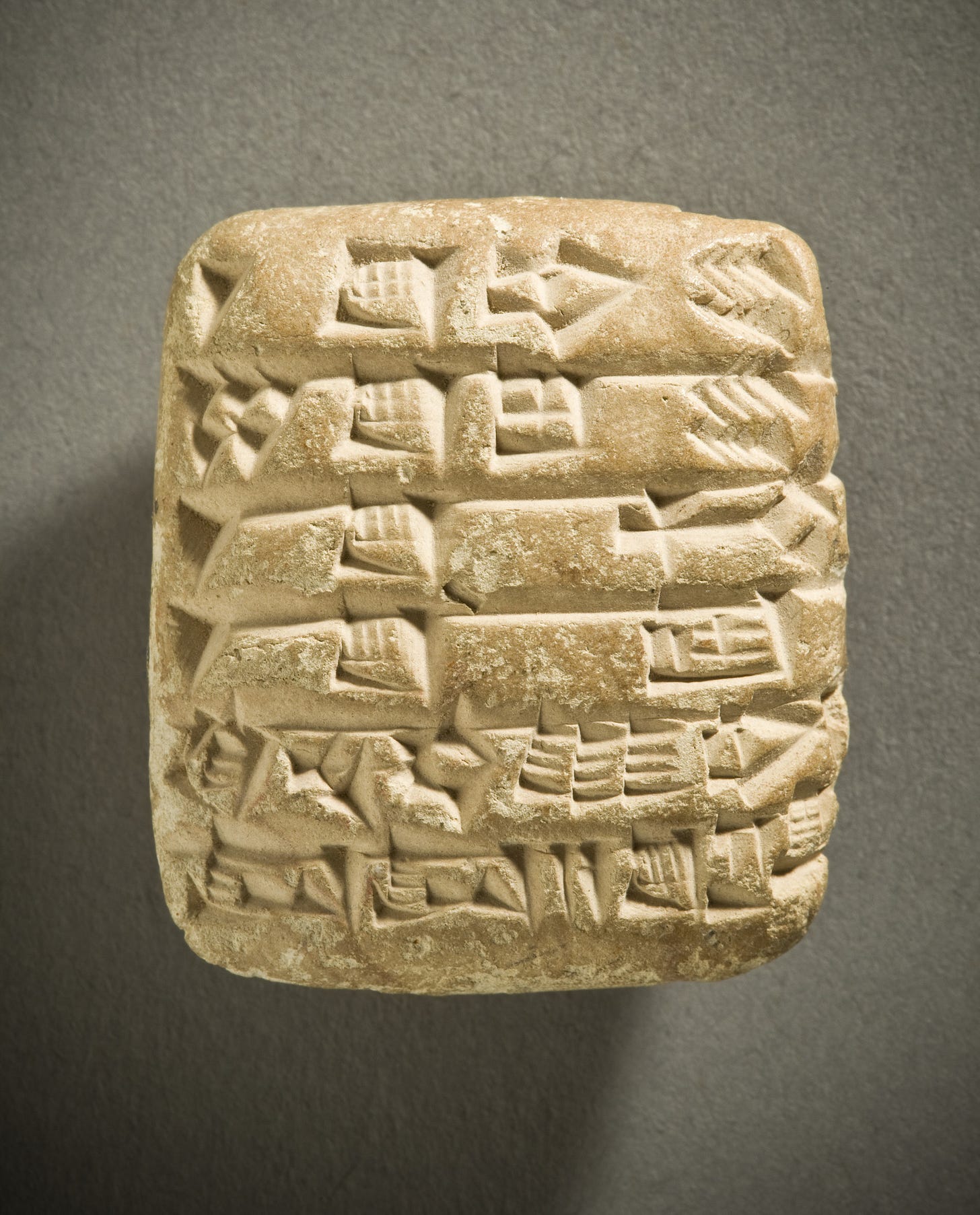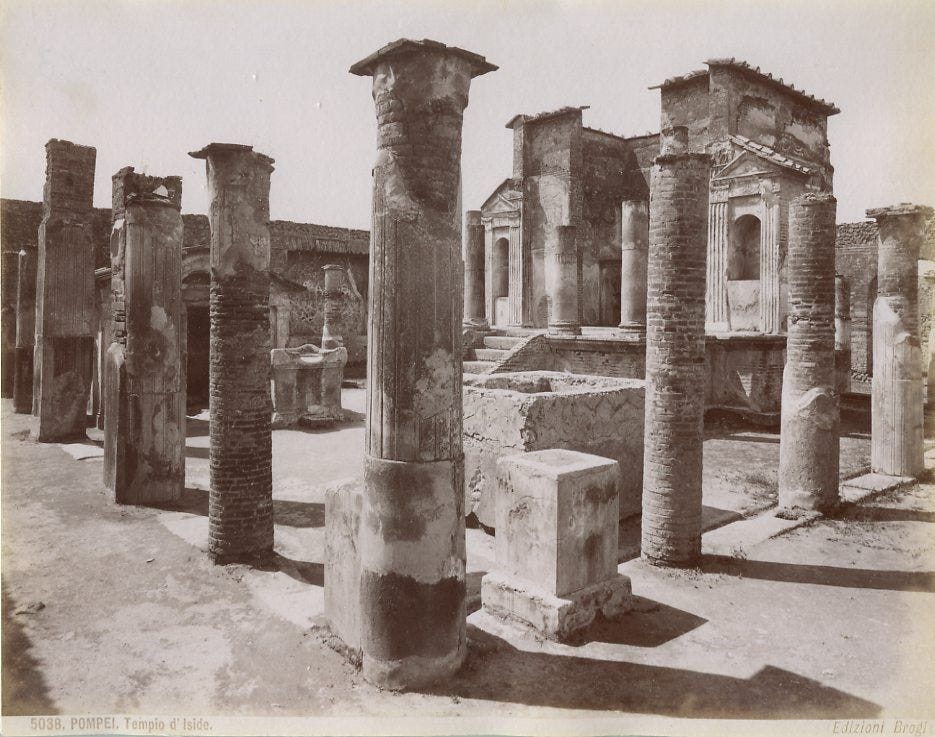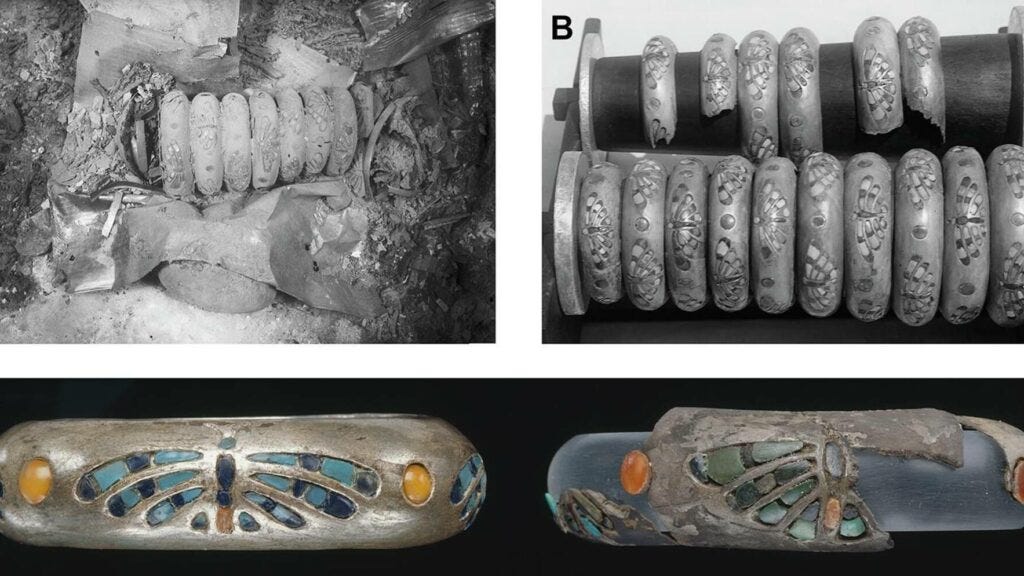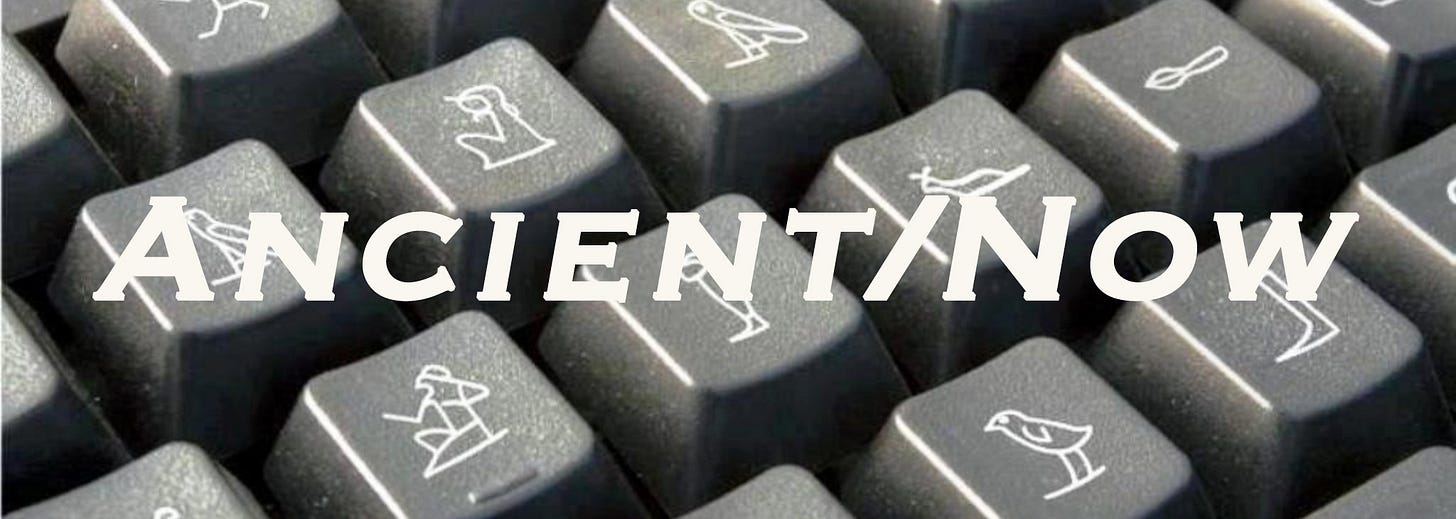Ancient/Now - June 5th
AI translation of cuneiform texts, cultic bird sacrifices to Isis, an Egyptologist fights looting using social media, and more
AI used to translate cuneiform tablets

AI has been set loose on ancient philology. Last month Israeli scholars published the first artificial intelligence translation of cuneiform to English. The translation of the ancient Akkadian inscription was published in PNAS Nexus, and is said to be comparably accurate to auto-translations of modern languages, a claim is meant to speak in favor of the AI translation’s accuracy. And yet, anyone who has ever used Google Translate knows that such translations can go horribly wrong. For now it seems that the cuneiform translating AI will simply be used as another tool in the philologist’s toolbox. Artnet News reports,
“First, let me state that we believe that A.I. will not replace philological work,” said Luis Sáenz, of the Digital Pasts Lab in the Department of Land of Israel Studies and Archaeology at Ariel University, one of the authors, in an email to Artnet News. “We want to speed up the process. Our hope is that A.I. will eventually be able to help both Assyriologists and non-Assyriologists read cuneiform texts in the future.”
Another challenge for an AI model aimed at translating ancient texts is providing it the training material it needs to understand context for ancient texts and improve its performance. Artnet News continues,
“There are, of course, limitations to the model,” says Sáenz. “The lack of context makes ancient languages difficult to translate, since we only have fragments of texts. Fragments with only one or two lines are extremely difficult to work with for A.I. The future will require more tools to digitize data published in papers in order to keep training the model and to improve the results. Also, a user-friendly web-based platform for the public is important.”
For now translating cuneiform texts will continue to be a painstaking and complex process requiring specialized training, but new digital tools on the horizon might just help speed up the process.
Bird sacrifices for Isis in Pompeii

(Bird lovers, skip to the next article, but really it sounds like Turduckon!) By the Roman period, the cult of the ancient Egyptian goddess Isis had spread throughout the empire, and temples to the goddess existed all over the Mediterranean world—including Pompeii. A new study published by the International Journal of Osteoarchaeology offers new insight into the cult of Isis at Pompeii and how the goddess was worshipped there. A faunal assemblage providing evidence of bird sacrifices from one ritual event in the first century CE was uncovered near the Temple of Isis in 2017. The animal remains, consisting mostly of chicken, ibises, geese, turtle doves, and other animals, proved to be a rich discovery. Researchers believe that frescoes in the Temple of Isis depict rituals involving birds, which were probably eaten during ritual banquets. Phys.org writes,
Prior research has found that the Temple of Isis was mostly destroyed during an earthquake sometime around A.D. 62. Imagery in the frescos suggest they were added after the earthquake as part of renovations. The researchers found depictions of rituals involving birds…This new finding, the researchers suggest, adds more evidence to theories that birds were used in Isis worship rituals in other places.
The researchers note that the find is significant because such rituals were conducted in private; thus, little evidence of them have been found. The Isis frescos are the first to have been found in Italy. The researchers also note that the birds were charred, suggesting that the people conducting the rituals had eaten them—likely as part of a banquet similar to some of those shown in the frescos.
Analysis of the animal bone assemblage in combination with the frescoes lend new insight into the role of animals in the Isis cult at Pompeii and perhaps the Roman cult of Isis in general. And let’s just say that this is very different from animal sacrifices in Egyptian temples, where the corresponding animal was dispatched, mummified, wrapped, and placed into a receptacle of some kind for the paying client to offer with their prayers. This Roman Isis temple ritual, on the other hand, was a feast. Typical…
Trade connections between Egypt and Greece date back to the Bronze Age

Contact with the northeast Mediterranean by Old Kingdom Egyptians? A new report from the Journal of Archaeological Science written by an international team of archaeologists presents evidence that suggests trade between Egypt and Greece dates back to the early Bronze Age (ca. 2600 BCE)—much earlier than previously thought. The report’s analysis centers around ancient Egyptian silver artifacts from the Museum of Fine Arts, Boston, including a fragment from a bracelet that belonged to the 4th Dynasty queen Hetepheres. The ancient Egyptians had no silver ore sources of their own, and the silver bracelets from Hetepheres’ tomb, discovered by Egyptologist George Reisner at Giza in 1925, are notable because most silver artifacts found in ancient Egyptian contexts date to the Middle Bronze Age. The scientific analysis in this new report determined “with a high degree of confidence” that the silver ore used to make the artifacts was sourced in the Aegean Islands in Greece, confirming that trade between Egypt and Greece dates back far earlier than archaeologists realized. Neos Kosmos writes,
The findings shed light on the beginnings of the globalised world, Dr Sowada [Department of History and Archaeology, Macquarie University, Sydney, Australia and one of the report’s authors] told the ABC, and underscore how much there is to learn about ancient Egypt and the trade networks that existed.
But, she added, the analysis of the bracelets “offered a window” into the emergence of the Egyptian state.
“These networks wouldn’t have happened overnight.
“They would have been built over a long period of time and these bracelets are a window into that wider network.”
The significance of the report’s analysis relies on the fact that the bracelets of Hetepheres in the Museum of Fine Art, Boston’s collection were excavated by Reisner’s expedition and therefore have a solid archaeological context. Had the museum acquired the bracelets through the art market, pinpointing the source of the silver ore used to make them would hold far less meaning. This report on Hetepheres’ silver bracelets helps illustrate just how much information is lost when artifacts are ripped from their archaeological contexts.
Egyptologist fights looting using social media
Since the January 25, 2011 revolution in Egypt that displaced president Hosni Mubarak, destruction and looting of Egypt’s archaeological and cultural heritage sites has skyrocketed. Egyptian authorities are loathe to acknowledge the unsettling severity of the problem, so Egyptologist Monica Hanna has been using social media sites like Twitter to publicize the looting in the hope that journalists will shine a light on the destruction that is happening in Egypt. As an Egyptian scholar, Dr. Hanna is in a unique position to be able to speak out. But this is dangerous work. Looters do not hesitate to use the threat of violence to intimidate local Egyptian authorities, making it unsafe for them to speak out. Foreign archaeologists and missions are fully aware of the extent of the problem, but they too want to avoid attracting the threatening attentions of professional looters. These foreign scholars are also aware that their commissions to conduct excavations and research in Egypt might be denied if they bring attention to a problem that Egypt’s government does not want to acknowledge. This leaves Dr. Hanna. Persistent and outspoken in her determination to document the destruction and sound the alarm about the ongoing loss of Egypt’s cultural heritage, her efforts have resulted in threats to her own physical safety. She recognizes that using her social media platforms to communicate the extent of the problem to the rest of the world might be one of the only ways an international effort could develop to disrupt the illegal antiquities trade flourishing in Egypt. And let’s just stop buying antiquities, huh?
What else were we reading this week?
2,700-year-old leather saddle found in woman's tomb in China is oldest on record Because women can do things….
2,000-Year-Old Grave of Roman Doctor Unearthed in Hungary We bet it was painful treatment…
Puzzling rings may be finger loops from prehistoric weapon systems, research finds Humans are always fighting each other…
Earliest evidence of wine consumption in the Americas found in Caribbean Because this is what one does at the beach…
Humans were using fire in Europe 50,000 years earlier than previously thought Even 50K years ago, fire is non-negotiable.
Humanity's earliest recorded kiss occurred in Mesopotamia 4,500 years ago, claims new study Awww, how cute….
Pets Will Soon Be Welcome at More Than 120 Archaeological Sites in Greece Dog-lovers, unite!
Archaeologists Discovered 2,500-Year-Old Ancient Greek Catacombs Using Subatomic Particles People have to put their dead somewhere…
A Centuries-Old Mystery: Did This Elusive Viking City Exist? One of the coolest links this week. A secret Viking ambush base!
5,500-Year-Old Megalithic Tomb Discovered In Ireland Heralded As "The Find Of A Lifetime" Pretty damn cool find….
One more thing…
The discovery of a seated calcite statue in the niche of a New Kingdom tomb at Saqqara was announced last week. The statue depicts the tomb’s owner and is inscribed with cartouches naming Thutmose III and Thutmose IV.
Check out the “Egyptology News” Facebook page for photos. They also posted this story (in Arabic) on the discovery, which identifies the statue as a priest from Khabar.
The statue has since been removed from the niche for the press conference, and we wonder if it will go to the GEM or back to the tomb to fill out the context of that find. We do like to see things placed together, as the ancient Egyptians wanted them to be.






